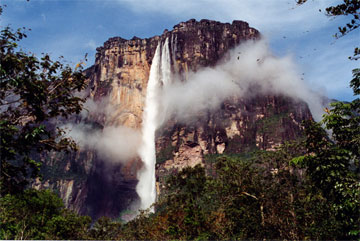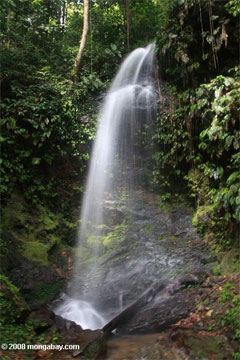There is enough water for everyone provided it is well-managed and distributed
There is enough water for everyone provided it is well-managed and distributed
Jeremy Hance, mongabay.com
August 21, 2008
An increasingly-popular view of our future is an exponentially thirsty world where billions lack access to fresh water, leading to widespread famine and wars over water instead of oil. If this sounds like science fiction, the UN has predicted that by 2050 seven billion people will suffer from water scarcity. Putting that number in perspective: today’s entire global population is not yet seven billion people.
Despite these bleak predictions, Jonathan Chenoweth argues that such a crisis is unlikely if nations take the right steps. In a New Scientist article entitled “Water, Water Everywhere” Chenoweth describes how the world can provide water to every citizen through better water management, technology, and ‘virtual water trading’—an economic system that is already flourishing.
Virtual water trading—a term coined by Tony Allen—describes how water-poor nations, such as those in the Middle-east, increasingly import goods that require large amounts of water to produce. The most important of these are agricultural products. Chenoweth cites a report from UNESCO which states that one kilogram of wheat requires 1300 liters of water and 3000 liters for the same amount of rice. Chenoweth writes that by importing these foods—rather than attempting to grow them locally—water-poor nations are using trade to overcome water shortages.
 Angel Falls in Venezuela |
“The growing trade in virtual water means that scarcity in one region can be compensated for by increased production in places with more plentiful supplies,” Chenoweth writes. He concedes that virtual water trading does not eliminate the world’s overall need for water, but shifts the resource so that water-poor regions do not suffer unnecessarily.
But what if the human population requires more water than is available? Chenoweth states that is unlikely. “Globally, there is adequate fresh water available, and that looks set to continue in the long term. Figures from the FAO indicate that we currently extract less than 10 per cent of the 43,750 cubic kilometers of fresh water returned each year to the Earth’s rivers, lakes and aquifers. The water is not distributed evenly, of course. Within a given country water consumption can vary from less than 1 percent of available resources to more than 100 percent, meaning that in some cases resources are being overexploited and degraded.” Chenoweth writes that the overexploitation of water can be stopped: “nations can thrive on surprisingly meager quantities of fresh water – provided they adopt water-efficient technologies and encourage economic activity that doesn’t guzzle water.”
 Waterfall in Suriname |
In fact, Chenoweth estimates that for a high quality of life every person requires approximately 135 liters (over 35 gallons) a day. His estimate includes cooking, drinking, hygiene, as well as industry, agriculture, and service sectors. Currently the world’s largest water guzzlers in the developed world—Canada and New Zealand—consume 700 liters of water per person per day.
Bringing water requirements down to 135 liters per person globally will require a number of technological and policy changes. For example, using recycled water from bathing for flushing toilets would eliminate 6-18 liters of water every time the toilet is flushed (depending on the model) and employing recycled waste water for irrigating crops would remove the most water-heavy industry from the equation.
Although many in the world already suffer due to lack of available fresh water, Chenoweth writes this does not need to be the case: “ensuring the supply of 135 liters per person per day is not beyond our reach”.













